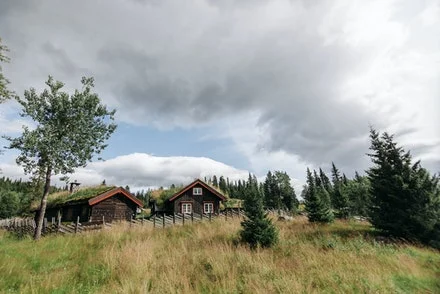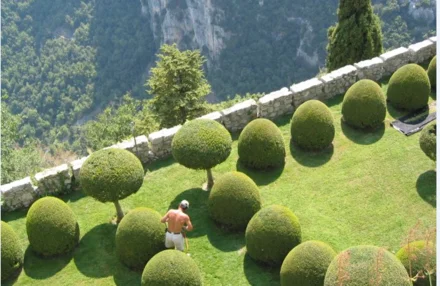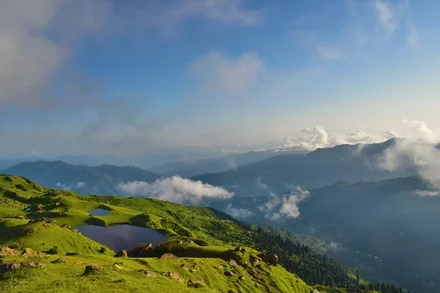Helpful Landscape Photography Tips For Beginners
Newbies with their first camera enjoy capturing nature and landscape photography. There is something special about getting out of town and capturing the amazing beauty surrounding you. Something is alluring about the stillness and stillness of waiting for the perfect moment to release the camera shutter, looking for the best vantage point, and watching the light change its surroundings.
Here are some landscape photography tips that will come in handy for budding photographers. We do not doubt it.
Maximize depth of field.
Of course, there may be times when you want to get a little creative and experiment. However, the normal approach is to focus as much of your scene as possible. The easiest way to do this is to close the aperture as much as possible. The smaller the aperture value, the deeper the depth of field in the pictures.
Remember, a smaller aperture means less light hits the image sensor, so you’ll need to compensate by increasing the ISO, shutter speed, or both.
Use a tripod
Due to the slower shutter speed, you will have to choose to compensate for the small aperture; you will need to find a way to keep the camera still during the exposure, such as mounting the camera on a tripod. But even shooting at a high shutter speed, using a tripod for good image quality is still useful. Additionally, to make the camera more still, you can use a cable or wireless network to use the shutter release mechanism so that even the hand pressing the shutter button does not affect the picture.
Look for a focal point – landscape photography.

All shots need some kind of focus, and landscapes are no exception. Without focus, landscape photography looks pretty blank and will force viewers to walk by without catching their eyes. Focal points in landscapes can take many forms, ranging from a building or structure to a notable tree, boulder, rock formation, silhouette, etc.
Think about what is in the center of focus and where you place this focus. Use the following rule: the most optimal focusing point is the line along which the border of a third of the distance to the horizon passes. Those. If, for example, from your camera to the horizon 900 meters, set focus on a line 300 meters from the camera.
Think foreground-landscape photography

One element that can make your landscape shots stand out is the elaborate foreground. It kind of provides the viewer with a way into the image and creates a sense of the depth of space.
Consider the sky
Another important element of the landscape is the sky. Most landscapes have a dominant foreground or sky. Without either one, your shot can be pretty boring.

If the sky is dull and dull, don’t let it dominate the photo. Place the horizon in the top third of the image (make sure the foreground looks interesting, though). If the sky is filled with drama, colors, and interesting cloud formations, you can put the horizon lower in the frame.
Think about how to improve the sky—using post-processing in a graphics editor or filters (for example, a polarizing filter adds color and contrast).
Lines
One of the questions to ask yourself when you are taking landscape shots is, “How do I guide the viewer’s eyes?” There are several ways to do this. One of the best ways is to show the viewers the lines that will lead them to the image and place some element in the foreground to create such a leading line.

Lines add depth and scale to an image and can be interesting in themselves, creating patterns.
Catch the movement
When most people think of landscapes, they think of a calm, serene, and passive environment. However, landscapes are rarely completely still, and conveying this natural movement adds drama and mood to the shot.
The wind sways the trees, the waves roll on the beach, the waterfall, the flight of birds, and the movement of clouds are natural movements in the landscape.
Capturing this movement usually means using a slower shutter speed (sometimes quite a few seconds). Of course, this means more light will hit the sensor, so either a small aperture or some sort of filter should be used, or even shooting early or late in the day when there is less light.
Work with the weather.

The scene can change dramatically at any time, depending on the weather. Choosing the right time for your photo is important.
Many aspiring photographers see a sunny day and think this is the best time to walk with a camera. But a cloudy day that threatens with rain can provide a much better opportunity to create an image with a real mood and ominous overtones. Look for storms, wind, fog, dramatic clouds, sun shining through dark skies, rainbows, sunsets, and sunrises. Deal with these weather changes, not just wait for the next sunny day with plain blue skies.
Work with the “golden hour”
There are seasoned landscape photographers who never capture landscapes during the day. Their only shooting time is dawn and dusk, the “golden” hours when the best light and landscapes seem to come to life. Another reason is the angle of the light rays and how light can affect the scene, creating interesting patterns, volumes, and textures.
About the skyline landscape photography

This is old advice, but it’s a good one: Always keep an eye on the horizon before taking landscape photographs.
Two security questions to keep in mind:
- Horizon line without tilt? While you can always straighten the image later in post-processing, it will be easier if you do it while shooting;
- Where is the horizon line in the composition? According to the rules of composition, the horizon line is located on one of the lines of a third of the image (either upper or lower) and not clearly in the middle. Of course, the rules are doomed to be broken, but the rule of thirds usually works.
Change the shooting point.

You can even lie on the ground to shoot from a low point or find a higher vantage point. Feel free to experiment with landscape photography. Not everything should be photographed at eye level, and only what is right in front of the nose should be. Explore the environment, try new things, and then you can find something truly unique.




